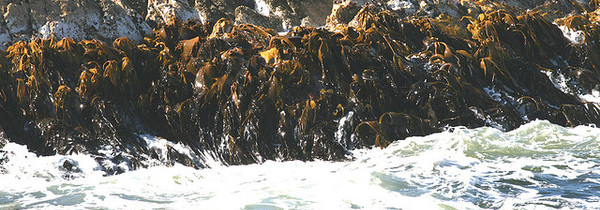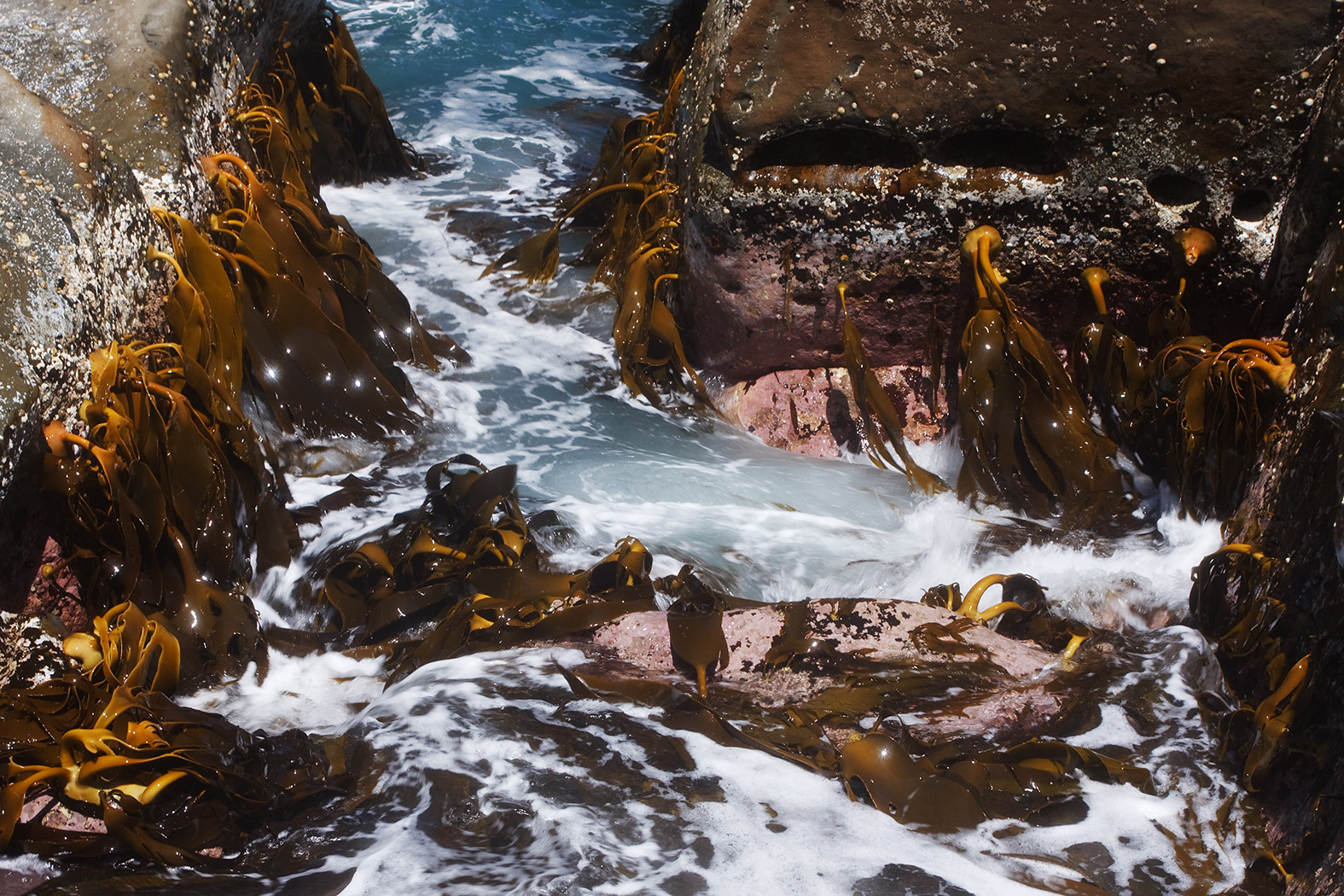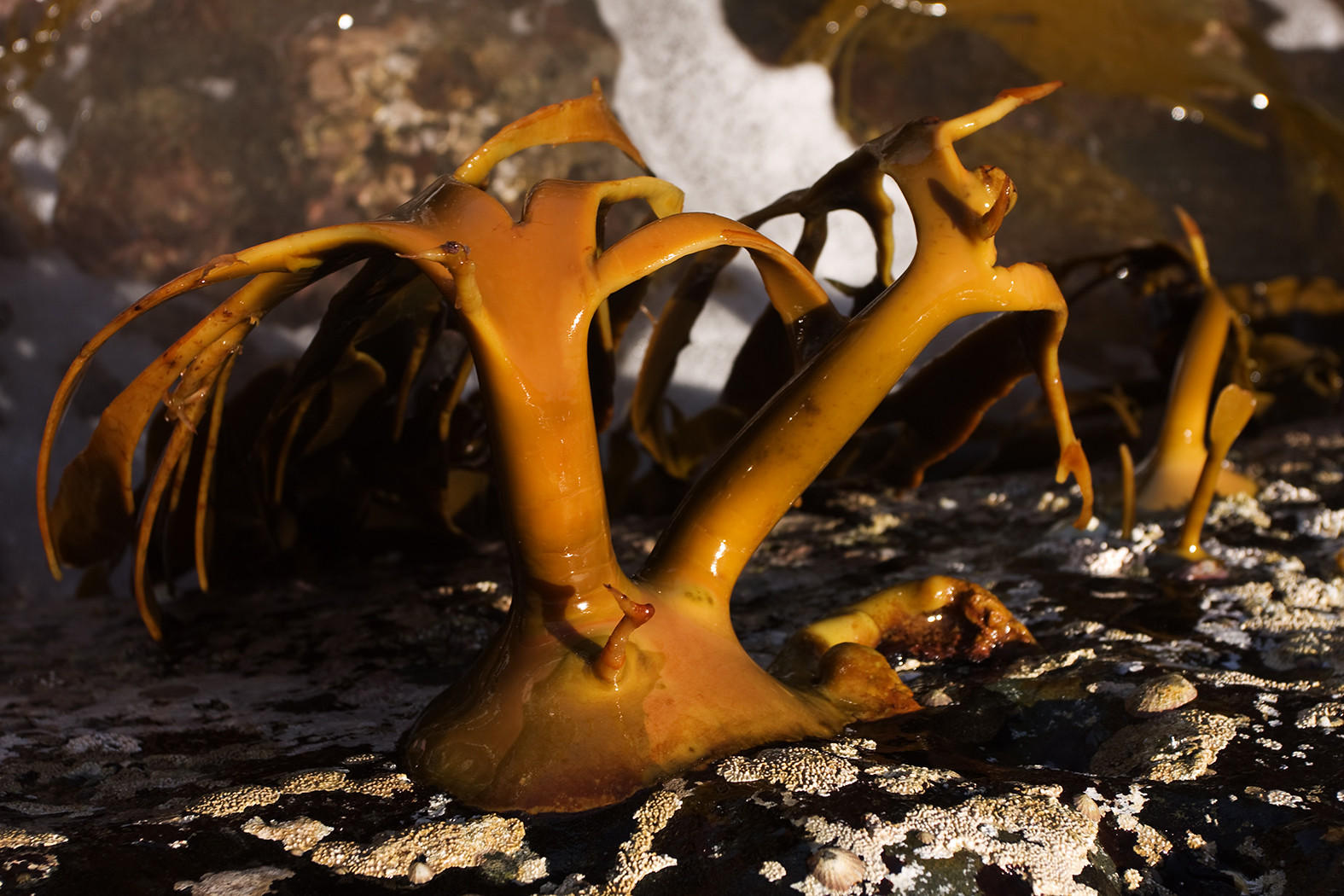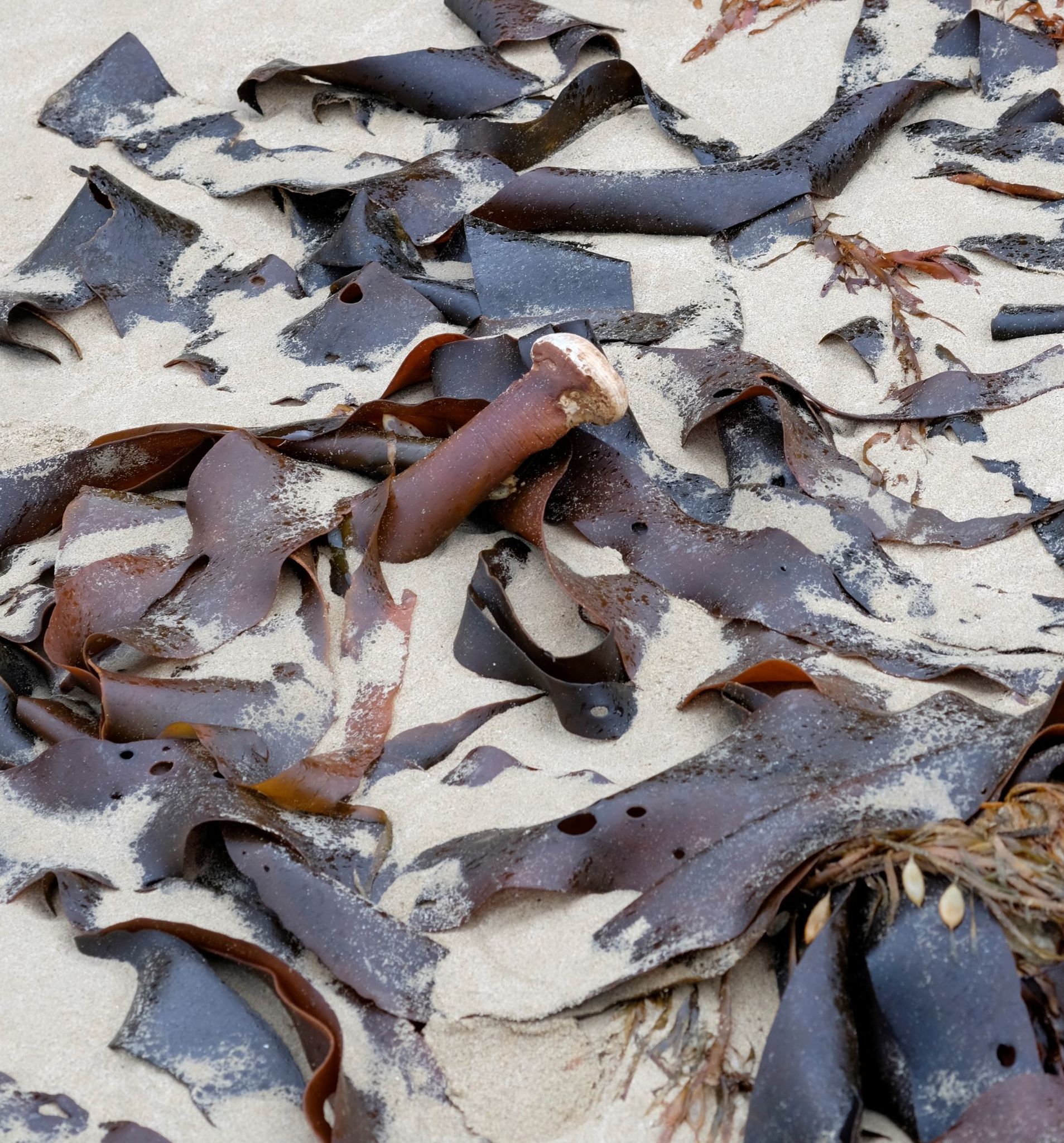Size
Up to 8 m long, holdfast up to 25 cm across.
Field Guide
Improve your identification skills. Download your Bull Kelp guide here!

A very large brown seaweed (algae). It has dark brown leathery, strap-like branches (thallus).
It attaches to the substrate by a large disc or conical-shaped holdfast. Usually there is a single leathery frond (stalk) from the holdfast, which divides into long segments or fronds.
Its strong holdfast often pulls off pieces of granite during storms which can remain attached to the kelp when washed up on shore.
Up to 8 m long, holdfast up to 25 cm across.
Improve your identification skills. Download your Bull Kelp guide here!

Search area for 30 minutes and record the following:
Abundant: found easily with little searching
Frequent: found with minimal searching
Rare: only 1 or 2 individuals found with intensive searching
Not found: not present during search


Durvillaea antarctica, the dominant species in shallow waters around Macquarie Island, may occasionally be found washed ashore in southern parts of Tasmania.